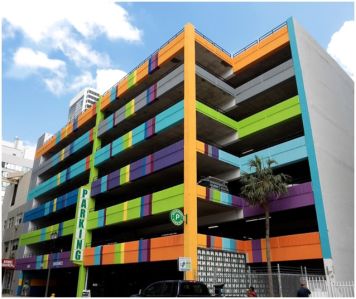Interest-Only Loans Back in Vogue Despite Risks: Fitch
By Matt Grossman July 23, 2018 4:52 pm
reprints
Securitized loans that feature an interest-only (IO) payment structure underperform traditional mortgages in significant ways—and they’re becoming more and more common, according to research by Fitch Ratings.
The proportion of CMBS trusts made up of loans that require only interest payments—not pay-downs of principal debt—has ballooned by over 50 percent since 2016. That year, on average, about a third of the typical transaction comprised loans with no principal payments until maturity. In typical transactions so far in 2018, such loans make up more than half the total balance.
That ratio is still far short of the high-water mark from the financial crisis, when about 75 to 80 percent of loans required only interest payments for their full duration, according to Ryan Frank, the lead author of the Fitch report. Still, investors may find the rapid proliferation of such loans troubling.
To compensate for the loans’ higher levels of risk, CMBS issuers usually tie IO loans to stronger real estate. Even so, interest-only loans default at a much higher rate than those with standard amortizations: more than a quarter of IO deals that closed during the loosey-goosey CMBS 1.0 era went sideways, compared with barely a fifth of amortizing balloon loans
“That’s a pretty significant difference, considering that the full-term IO loans actually started at a lower loan-to-value [ratio],” Frank said in an interview.
What’s more, IO loans have historically been responsible for cumulative losses worth about 5 percent of their CMBS trusts, versus 4 percent for loans with standard amortizations.
That spilt “shows a significant difference in the average impact for CMBS trusts,” Frank averred.
Some of the biggest CMBS deals to reach investors in recent weeks demonstrate how common IO lending has become. In this month’s $420 million BDS 2018-FL2 deal, 18 of the 19 securitized mortgages require only interest payments for at lest their initial terms. Investors have even shown an appetite for single-asset interest-only transactions, in which not a penny of the entire trust’s principal debt is repaid until amortization. That’s the case with this month’s GSMS 2018-RIVR deal, a $310 million IO securitization of 1.7-million-square-foot Chicago office tower issued by Goldman Sachs (GS).
Fitch says its credit ratings account for IO loans’ lackluster track record by casting a skeptical eye on issuers’ forward-looking debt-service coverage estimates, and by assuming that even the strongest IO loans will lose ten percent of their value. But Frank remains concerned that if the full brunt of an IO loan comes due in a time higher interest rates—almost guaranteed, given today’s cheap borrowing—finding affordable refinancings might be a tall order.
“We think that one of the biggest risks for CMBS loans being issued in today’s trusts is refinance risk,” he said.


